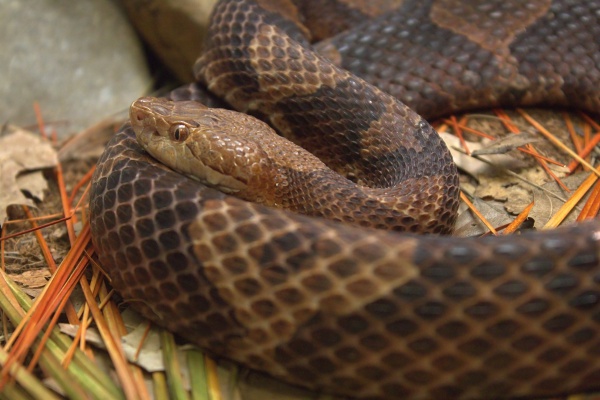Facts About Copperhead
The copperhead snake, scientifically named *Agkistrodon contortrix*, is a venomous pit viper native to Eastern North America. Its name, derived from Greek and Latin, means "twisted hook-tooth." These snakes typically measure between 50 and 95 centimeters, with males generally being larger than females. Copperheads have a robust body, a distinctively shaped head, and unique scale patterns.
Copperheads are easily recognizable by their tan to pinkish-tan coloration, adorned with darker crossbands. They primarily inhabit deciduous forests and mixed woodlands, often favoring rocky areas and swamps. Known for their ambush hunting technique, copperheads can remain motionless when approached, blending seamlessly into their surroundings. Their diet mainly consists of small rodents, insects, and frogs.
These snakes breed in late summer, with females giving birth to live young. Interestingly, copperheads can also reproduce asexually through a process called facultative parthenogenesis. Although venomous, copperheads are not typically aggressive, and their bites are rarely fatal. If bitten, one might experience pain, swelling, and nausea. Notably, the venom of the southern copperhead has shown potential in halting cancer cell growth in animal studies.
Copperheads are classified as "Least Concern" on the IUCN Red List, indicating a stable population. While the species has various subspecies, some genetic studies suggest that these might actually be distinct species or regional variants. If bitten by a copperhead, treatment typically involves the antivenom CroFab, pain management, and medical supervision.

 United States
United States